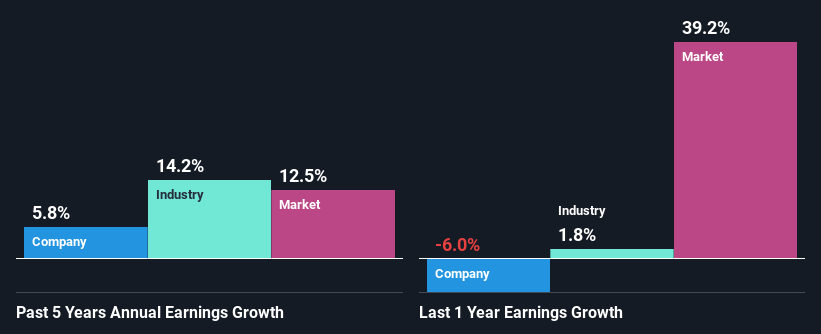Curtiss-Wright Corporation's (NYSE:CW) Stock's On An Uptrend: Are Strong Financials Guiding The Market?
Curtiss-Wright (NYSE:CW) has had a great run on the share market with its stock up by a significant 13% over the last three months. Given the company's impressive performance, we decided to study its financial indicators more closely as a company's financial health over the long-term usually dictates market outcomes. Particularly, we will be paying attention to Curtiss-Wright's ROE today.
Return on equity or ROE is a key measure used to assess how efficiently a company's management is utilizing the company's capital. In simpler terms, it measures the profitability of a company in relation to shareholder's equity.
View our latest analysis for Curtiss-Wright
How Do You Calculate Return On Equity?
ROE can be calculated by using the formula:
Return on Equity = Net Profit (from continuing operations) ÷ Shareholders' Equity
So, based on the above formula, the ROE for Curtiss-Wright is:
13% = US$239m ÷ US$1.9b (Based on the trailing twelve months to June 2021).
The 'return' is the profit over the last twelve months. One way to conceptualize this is that for each $1 of shareholders' capital it has, the company made $0.13 in profit.
What Is The Relationship Between ROE And Earnings Growth?
We have already established that ROE serves as an efficient profit-generating gauge for a company's future earnings. Based on how much of its profits the company chooses to reinvest or "retain", we are then able to evaluate a company's future ability to generate profits. Assuming all else is equal, companies that have both a higher return on equity and higher profit retention are usually the ones that have a higher growth rate when compared to companies that don't have the same features.
Curtiss-Wright's Earnings Growth And 13% ROE
To start with, Curtiss-Wright's ROE looks acceptable. Even when compared to the industry average of 13% the company's ROE looks quite decent. This certainly adds some context to Curtiss-Wright's moderate 5.8% net income growth seen over the past five years.
Next, on comparing with the industry net income growth, we found that Curtiss-Wright's reported growth was lower than the industry growth of 14% in the same period, which is not something we like to see.
Earnings growth is a huge factor in stock valuation. What investors need to determine next is if the expected earnings growth, or the lack of it, is already built into the share price. By doing so, they will have an idea if the stock is headed into clear blue waters or if swampy waters await. Has the market priced in the future outlook for CW? You can find out in our latest intrinsic value infographic research report.
Is Curtiss-Wright Making Efficient Use Of Its Profits?
In Curtiss-Wright's case, its respectable earnings growth can probably be explained by its low three-year median payout ratio of 10% (or a retention ratio of 90%), which suggests that the company is investing most of its profits to grow its business.
Additionally, Curtiss-Wright has paid dividends over a period of at least ten years which means that the company is pretty serious about sharing its profits with shareholders. Our latest analyst data shows that the future payout ratio of the company is expected to drop to 4.9% over the next three years. As a result, the expected drop in Curtiss-Wright's payout ratio explains the anticipated rise in the company's future ROE to 17%, over the same period.
Conclusion
Overall, we are quite pleased with Curtiss-Wright's performance. Specifically, we like that the company is reinvesting a huge chunk of its profits at a high rate of return. This of course has caused the company to see a good amount of growth in its earnings. Having said that, looking at the current analyst estimates, we found that the company's earnings are expected to gain momentum. To know more about the company's future earnings growth forecasts take a look at this free report on analyst forecasts for the company to find out more.
This article by Simply Wall St is general in nature. We provide commentary based on historical data and analyst forecasts only using an unbiased methodology and our articles are not intended to be financial advice. It does not constitute a recommendation to buy or sell any stock, and does not take account of your objectives, or your financial situation. We aim to bring you long-term focused analysis driven by fundamental data. Note that our analysis may not factor in the latest price-sensitive company announcements or qualitative material. Simply Wall St has no position in any stocks mentioned.
Have feedback on this article? Concerned about the content? Get in touch with us directly. Alternatively, email editorial-team (at) simplywallst.com.

 Yahoo Movies
Yahoo Movies 
